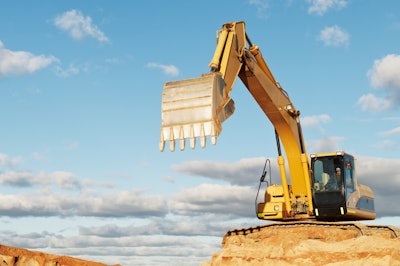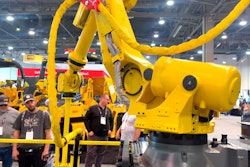
It's in the news everywhere. The construction industry is heading for a glut of open positions and a labor shortage of historic proportions. Project budgets and schedules are already constrained by the need for speed, and this requires the best of the best in labor which comes now at an increasing premium. The dichotomy of labor as the seasoned veterans phase out of their careers and the next generation of techno-infused Tik Tok aspirationals are less inclined to join a seemingly anachronistic field of work has a generational worker decline crisis algorithm running at full speed. Before too long, there will not be enough workers to get the projects built for the still expanding populations of the world, and the cost and time to construct will only continue to rise.
However, what if I told you this is a fallacy or a hysteria similar to the reactions to technology taking jobs as a net negative as in the Luddite fallacy. What if I told you that slowly in the background, new professional methods and technologies have been slowly iterating in the fields and offices of construction projects across the world and that this is not a systemic problem that will come crashing down on us suddenly?
I know from firsthand experience, having seen the shifts and changes underway in the construction industry over the course of the last 18 years. I started in 2005 in the Seattle carpenters’ apprenticeship, learning the “old way” as one of the last of the carpenter apprentice classes before the new technologies really began settling in. Pre iPhone, it was paper drawings and traditional building methods. Straight, plumb, level, square, and most importantly, true. Those were the carpenters' mantras and indicative of the pride and craftsmanship which was imbued upon the apprentice in this field of knowledge passed down from generation to generation. That last part was to be true to your craft, true to your intentions, and to the pride in your work; this will never leave the trades and will not be augmented. There will always be those creative, hard-working men and women who will take up construction tools and, through hard, hands-on work, will look upon their creations with pride. There will just be less sweat equity as we continue to transition away from the back-breaking work of our fathers and take up the mantle of “work smarter, not harder!”
It takes creativity to craft anything, and it takes brilliant and creative folks to work together in the chaotic symphony of construction. From those first days of paper plans, I worked my way into learning surveying and began my fascination with construction technology. Once I learned about lasers, cartesian coordinates and geo-location it unlocked terrific opportunities for me. I returned to college after attaining the journeyman carpenters’ status and learned about CAD and more importantly 3D modeling. At that time, 3D modeling was taking hold of the industry, and it was perfect timing. I was able to take my hands-on background in construction and apply that to construction management and suffuse it with the increasing technological advancements of virtual design and construction.
In what feels like a very short period of time relative to the construction industry, 3D modeling and virtual design and construction took root in the larger contractors' offices and laid the groundwork for the following decade of rapid advancement in construction technology.
This led me to create a construction technology R&D department at one of the most forward-looking large GCs in the Seattle area, which worked in tandem with the VDC department in the exploration of advanced and emerging technologies for construction. This sent me on the path to where I work now, at one of the leading construction risk automation companies in the world. I state this to begin to circle back to my comment about the labor shortage being a catastrophe or a point of great worry. I speak from the experience of learning construction the old way, the hard way. I speak from years of exploring how we can improve across many workflows and processes and from the standpoint of someone who believes they understand where this is leading and is experienced in construction technology and innovation.
I’ve seen technologies being developed in every sector of the construction industry and see these advancements being refined and purpose-built, not to replace labor but to augment the labor force we have. These technologies will support the newer generations of builders, and this is important to attract them to one of the oldest and most rewarding industries available to them. This will create newer, yet unknown, opportunities similar to how the advancements in ride-sharing and task-based applications on the heels of the smartphone explosion gave rise to the gig economy.
Technologies that seemed futuristic just a few years ago and definitely sci-fi almost 20 years ago when I started are already in use on construction sites today:
- Digitization is the most basic and widely proliferating technology, and the network effects of this digital transformation which has taken place over the last 20+ years. This really got a boost as digital technologies became more accessible in tablets and smartphones, and their impact cannot be overlooked.
- Robotics can print the project designs onto the floor, lasers which can project the plans onto the walls and ceilings, both with fantastic accuracy exist, saving the knees and backs of those who would traditionally have to laboriously bend and reach all day to transcribe design onto the real world. I have been there and would gladly give some of the workloads to a robot.
- Laser scanning and 360 photos, along with photogrammetry and reality reconstructing technologies as captured by drones in the sky and ground-based robots are scanning and documenting projects and capturing realistic and photographic representations or reality capture of the projects at a given moment in time. That documentation is being uploaded into web-based environments saving countless human resources in the capture and then even more in providing visibility to projects like never experienced.
- Telepresence and teleoperation will become more feasible in the coming years as technology increases and safety concerns and trust are built. The early jobsite robots are paving the way for more and many different kinds of robotics in the near future which will address the labor shortage. I’m not saying fully autonomous robotics immediately but think teleoperated or collaborative robots which augment the existing workforce by taking over repetitive tasks and significantly improve worker productivity and safety. Many examples are already making their way into the field for everything from drywall finishing, welding and concrete drilling.
- Advancements in the cloud and virtual access and virtual oversight of construction projects have proliferated as mobile and edge computing technologies have taken root. This augments personnel to cover more ground for reviewing work in place and reduces the safety risk of unnecessary on-site personnel by bringing the job site safety to them offsite.
- Artificial intelligence is already underlying in many of the widely used applications for document and project data, while newer and more cutting-edge techniques for analyzing and reporting on the job sites' progress are beginning to take root now. This is being enabled by the advancements in documentation and reality capture technologies This is saving countless human hours in analyzing progress and finding deviations from design intent so that contractors can spend time-solving problems, not finding them. This is augmenting the workforce by honing in on the areas which need the most attention and preventing the unnecessary resource drain of rework, which saddles projects with added costs and delays
- Digital twins of construction projects are being built from the project's data and a single source of truth as delivered by digitization and technology proliferation are changing the paradigm of what it means to build and what it is in fact which is being built. No longer is the project just analog physical structures but they are digitally infused and data rich constructions meant to inform not just the construction project but to be the basis for the future of and the entire lifecycle of the building
- Advancements in AR/VR/XR technologies to share and experience the construction project are already here and just awaiting the iPhone moment with the right combination of timing, software and hardware to proliferate. This will fuel the ability to enable remote collaboration which the industry has never had before allowing untold future labor to be tapped as remote access to projects is safely and easily accessible as playing a video game. The Fortnite generation may just get excited about that!
- The advancements in virtual design and construction are leading to more prefabrication of components and in the case of cross-laminated timber projects nearly entire buildings eliminating waste and maximizing human capital.
- 3D printing and on-site customization is evolving rapidly and major concrete formwork companies are experimenting with delivering the future of building foundation construction to enable faster, less wasteful and more digitally-controlled construction which in turn will require less human effort.
These are a few of the new and emerging technologies which will affect every aspect of the construction workflow. They are being tested or used daily as we work towards a technology-mediated augmented workforce. The wide breadth and range of the technologies are creating new roles which the newer generation of builders will be adept at and engaged with. The technologies themselves will augment and optimize the existing workforce and elongate their working capacity by offloading repetitive, dangerous and automatable tasks. This will free up the human workforce to engage with the creative aspects of the trades and help continue to hasten the advancements. This will allow the construction industry and professionals to turn a better profit well into the future. After experiencing the rapid pace of change over the last few decades and watching now the even faster advancements in large language models and generative AI, I think that we will see an increase in the speed and proliferation of construction solutions.
We just have to remember that no matter what the technology is that is disrupting the industry and the foundations of the trades, the basics will not change. We will need to build new buildings and repurpose the ones we already have, it will be just a matter of how and if we can maximize profit, while being good stewards to the resources of the earth, reusing what we can while optimizing and protecting the precious human resources which we rely on. Straight, plumb, level, square and true will apply more than ever as we transition into the technology-augmented workforce of the future, allowing the industry and workers to do more with less.


















